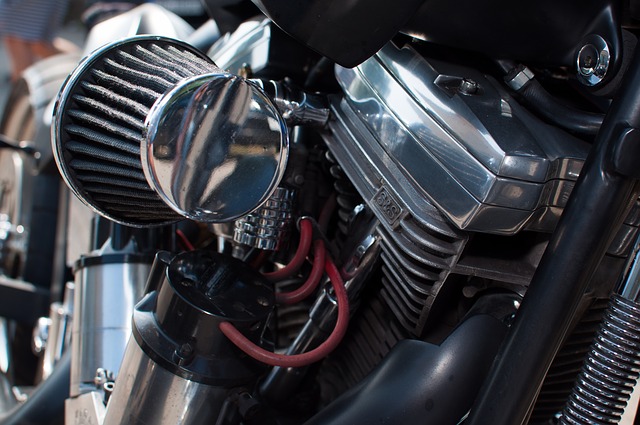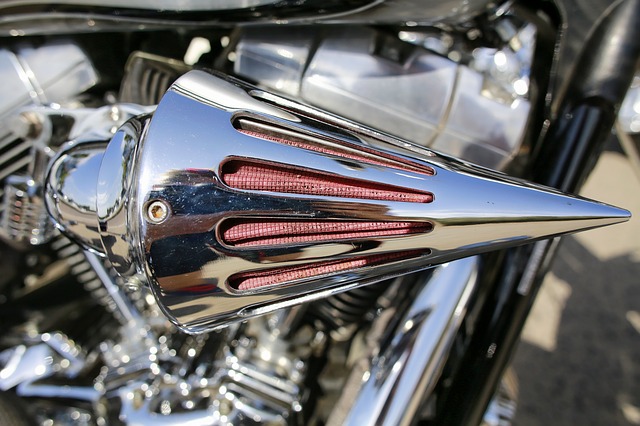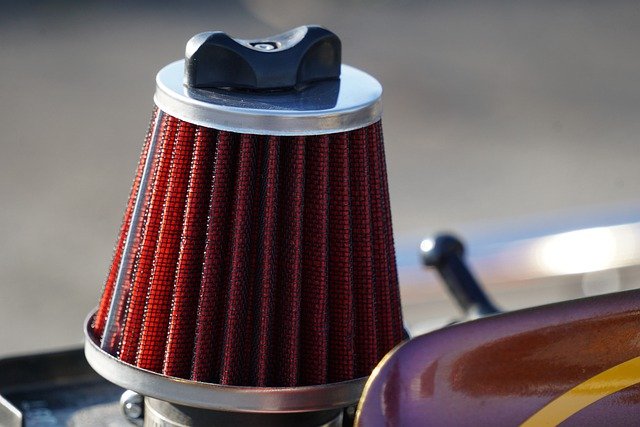Very much like living human beings, internal combustion engines also need to breathe air for their oxygen requirements. As such, an air filter plays a vital role in motorcycle engine combustion.
So, what does an air filter do in a motorcycle? Air filter ensures that the air sucked inside for the engine combustion in motorcycle is contaminant free by filtering out the dust in the air. An air filter will ensure smooth running of an engine.
Let’s deep dive into the role of air filter in a motorcycle, its different types and the modifications made.
Role Of An Air Filter In A Motorcycle
Any engine, be it four- or two-stroke irrespective of the number of cylinders and architecture besides fuel type— petrol or gas (LPG/CNG) — needs air to be mixed in fuel for combustion.
The air sucked inside the engine via the specific delivery system also known as an intake system must be clean and 100% free of contaminants.
In older machines, fuel or gas was delivered to the combustion cylinder through mechanically operated carburettors.
In modern machines, sophisticated sensor based electronically operated Fuel Injection (FI) systems do the job.
Common to both are the air filtration systems. The volume of clean and filtered air that mixes with the fuel is determined by the jets in a carburettor.
The air filter ensures clean air is passed into the engine by weeding out contaminants in the air sucked into the motorcycle.
An array of sensors in fuel injector-based machines decide the mixture ratio (lean or rich) based on throttle inputs from the rider.
Modern Air Filters
Most modern motorcycles these days have replaceable filter systems while some older machines have reusable types of filters.
Older reusable filters used wire mesh or fabric or foam based liners.
Modern motorcycles use cartridge type of filters.
A clean air filter will ensure smooth running of an engine. A choked air filter will reduce the engine’s performance significantly as it will not be able to take in the required amount of air (by volume).
It will also cause a severe dip in fuel efficiency and even impact the motorcycle’s acceleration.
Motorcycle manufacturers have ensured that the air flow system has been designed to offer a specific volume of clean air to the engine.
Where To Find Air Filter In Your Motorcycle
In your 2-wheeler, you can spot the air filter or its assembly behind the carburetor or fuel injector. It’s usually neatly tucked in under the seat or body panels.
Usually out of sight, you may consider this as the clean air breathing apparatus facilitator.

How Often Should You Replace Air Filters
The air filter in a motorcycle should be replaced every 12,000 miles (20,000 kilometres).
In addition, the air filter should be checked during every motorcycle servicing period. That is, checking and inspecting the air filter (air cleaner) every 3000 miles (5000 kilometres) of distance traveled.
Within the air cleaner, only the filter screen should be replaced since filter is the one that will be clogged from time to time.
For a more detailed guide, here is our post on air filter change interval.
If the motorcycle is used in dusty conditions, the air filter will need to be cleaned or replaced earlier than the recommended cycle. Neglecting this aspect can cause severe damage to the internal components of the engine.
How To Replace An Air Filter
Replacing an air filter is not a tedious DIY job if the air filter housing is easily accessible. It requires some basic tools and a logical mind set. First, you need to locate it.
In most street going motorcycles you may require to remove the fuel tank. If that’s the scenario, several precautions need to be taken.
First put the fuel tap lever in the ‘off’ position. Disconnect the petrol pipe from either tap or carburettor end gently. Disconnect fuel tank sensor unit from the wiring harness.
In some motorcycles, especially two stroke and basic single-cylinder four-stroke engines, the air filter can be accessed and removed without having to do major dismantling.
However, in fully faired motorcycles, professional help may be required as several body parts of the motorcycle have to be dismantled before access can be made to the air filter.
Most café racers and minimalistic custom motorcycles usually have exposed filters, which means that they can be removed and replaced easily from outside.
When removing a panel or a fuel tank, you must take your time and do it patiently.
Most modern air filter systems come with a rubber seal that sits snugly in the air filter housing. When replacing the old filter, alway check the sealing side before putting the new one back in place.
Incorrect fitment will defeat the purpose of filtering aspect of the breathing system as it will allow unwanted and unfiltered air to be sucked inside the engine via carburettor or fuel injector.
In terms of costs for replacing an air filter element, it’s actually one of the least priced replacement parts for your motorcycle.
During normal service of the motorcycle (that is oil and lube change), usually the service team will take out the filter and inspect its condition.

Compressed air is blown through the filter element inside out. This process is applicable for lightly soiled air filters.
Another indicator that the paper-type air filter is on its way out is its discolouration.
Eventually, it will have to be replaced. You can either use a branded cleaner or try your luck with soap and water followed by a nice dry clean with compressed air. My advice is that if soap and water works for you, then it is a good idea to save on the money for expensive cleaners. However, if your significant benefits are evident after using the brand cleaner, then the best strategy is to work with what works better for you.
For the best performance and longevity of the motorcycle engine, you have to decide whether to replace or retain the old air filter.
Air Filters: Do’s And Don’ts
- Never allow your mechanic to puncture holes in old and dirty filters that have passed their best use-by-life. I have seen many roadside garages practice this.
- Doing so may save the bike owner a few bucks initially, but soon will realise a big bill coming when dirt damages expensive engine components.
- Most OEM or manufacturer approved air filters used in street-oriented motorcycles can be used for 15,000 to 20,000kms.
- The timing for change or cleaning will depend on the motorcycle’s operating environment.
- For motorcycles that operate in dusty conditions, paying attention to the air cleaner periodically will ensure longer working life for the engine.
- When opting for replacing the air filter element, always prefer to invest in an OEM. Never buy a cheaper or inferior performing product.
- Some air filter modifications are acceptable if recommended by experts.
Air filter modifications
- Many motorcycle enthusiasts look at ways and means to improve the performance of their machines.
- Some also want their machines to sound a bit louder.
- There are several ways to achieve these aspirations and this leads to several questions: Can modifying air filters help gain horsepower or make the machine louder?
- It’s a simple science-based fact that more air inside the intake duct means more oxygen. More oxygen in the cylinder means more combustion and that translates to more horsepower.
- In fact, a high flow air filter is among the popular types of air filters that can actually increase a motorcycle engine’s horsepower and increase its torque as well. Fuel efficiency can also be improved this way.
- For a louder sound, experts recommend using a cone type air filter that replaces the stock set-up (both air filter and air box).
- High flow air filters also offer an extra advantage. Unlike conventional use and throw air filters, the shelf life of this type of air filter is much longer.
- How? Unlike conventional air filters, it doesn’t have to be changed every year as they don’t get clogged as quickly or as easily.
- Since they offer better air flow and filtration, it helps the engine perform better.
- In fact, it has been proven on the dyno that a high flow air filter can actually increase your horsepower and torque marginally.
- The market offers various iterations of high flow air filters at various price points.
- For high performance motorcycles, experts recommend a filter set-up that comes with a cold air intake unit.
- The reason for this is that cold air is more dense and will burn better, resulting in performance improvement of the engine.
- While high flow filter systems are gaining popularity, the flip side is that high performance filters can actually expose your engine to more debris and contaminants. It can also increase the amount of dirt and dust in your oil and put more wear on the internal elements.
- For acoustic lovers, merely replacing air filters will not make the motorcycle sound louder.
- To do this, you need to fix a cone shaped air filter. This will replace the stock air filter and air box. Several aftermarket brands specialise in these. As the air filter becomes exposed, the sound of air gushing into the engine as you accelerate will be more evident.
Monsoon Woes
While most motorcycles with enclosed type of air filter systems are usually safe from splashing rain, in floods the scenario could be different.
You have two situations to contend with. One, if the motorcycle is static, and the other if it is on the move. In either case, it is advisable to kill the engine thereby preventing water entering the engine. A thorough check up and clean up is required. As an additional precaution check and replace engine oil (even if it was changed recently).
Special to off-roaders
Off-roading sojourns are guaranteed to tax your machine. Keeping the air filter clean 24/7 may not be possible due to riding conditions. Most off-roading enthusiasts keep an extra set for such emergencies. This saves time and also ensures the machine remains ship-shape.
